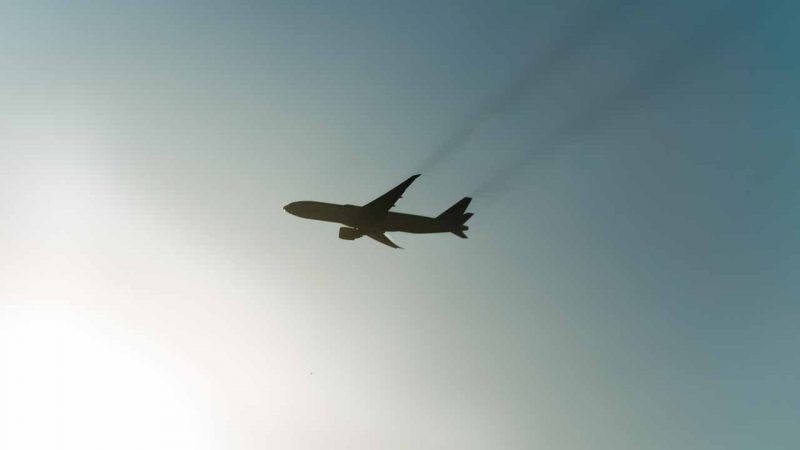Ghost Flights Haunt the Airline Industry
The coronavirus outbreak created a new phenomenon for the airline industry: ghost flights
March 27, 2020

Ghost flights are haunting the airline industry as the coronavirus outbreak continues. It has reduced demand by double digits, with ramifying impacts throughout the business. The airlines are coping as best they can. But, in fact, they’re stalling out, barely aloft. In March, they parked hundreds of planes and even put many out to pasture.
The airlines may lose as much as $113 billion in sales thanks to the coronavirus, according to the International Air Transport Association (IATA). A Sydney, Australia-based aviation consultancy, the CAPA Center for Aviation, warned in mid-March that, without government assistance, most airlines worldwide will face bankruptcy by the end of May. “Coordinated government and industry action is needed — now — if catastrophe is to be avoided,” the center says.
It is true that for many carriers, especially in the U.S., there is a commitment to keeping the commercial air travel system operating nominally, despite the now-staggering cost of overhead in attempting to do so.
And, yes, a shutdown of domestic flights has been ruled out — whether by the White House, the carriers, or trade groups. On March 26, Nick Calio, CEO of the trade association Airlines for America, stated categorically that “…we haven’t received any information that would suggest there have been any serious discussions about grounding domestic flights.”
Still, a shell-shocked public confronted with a stealthily transmissive, lethal contagion and unwilling to hazard further infection and catastrophe, has prompted U.S. and foreign governments to institute heretofore unheard of travel restrictions worldwide.
These have led the airlines down an overly steep glide path of cancelled flights; residual “ghost flights;” mothballed planes in the hundreds, and a colossal loss of revenue. The industry’s leaders — who have been feverishly lobbying both the federal and foreign governments for emergency bailouts and other assistance — confirm that never before has demand vanished so rapidly and caused such a cataclysm.
Meanwhile, it remains utterly unclear when or even if the global industry can recover. It certainly seems plausible that a likely recovery timeframe will not be as short as three to five months (commensurate with the length of the outbreak’s onset and likely course, before it can be sufficiently managed, in a best case scenario).
And so, on Monday morning, March 23, American Airlines Flight 1 departed JFK Airport in New York, bound for Los Angeles, but with only six passengers aboard–despite the route’s reputation as a busy, high-earning, flagship-signature one. Flight 1 is now a money-losing carcass with little or no profit to yield.
But, again, at least American and others are coping. For one thing, they’re attempting to salvage cash in any way possible. Two examples: 1) They’re offering employees voluntary leave programs; and 2) instead of buying new parts for the planes in their fleet still flying, they’re cannibalizing the same parts from the hundreds of planes the airlines have lately parked.
Much to its credit, American, like so many others, is initiating new sources of revenue. In mid-March, for the first time since the early 1980s, it ran flights without passengers — lofting “cargo only” on certain flights between Dallas and Frankfurt, which have carried mail, medical supplies, telecom equipment and electronics for U.S. troops based in Germany.
An especially eerie phenomenon ensued during the first few months of the outbreak. As travel fell off precipitously at airports — but before governments and airport managers quite appreciated the stark, new reality — the airlines flew so-called “ghost flights.”
What are ghost flights? The airlines sent virtually empty planes on their existing routes in order maintain their coveted takeoff and landing slots at certain airports for this year and the next. For awhile, then, some deserted airports were both launching and landing empty or nearly empty planes.
The airlines and the public soon called into question the practice, which was jettisoned, after both domestic and international aviation governing bodies “got” the dire import of the novel coronavirus outbreak.
Meanwhile, relatively raw capacity-cutting continues apace. For example, by the third week of March, Delta had tracked a $2 billion revenue loss for the month. It cut its capacity by 70%. Korean Air’s capacity cut has been widely quoted as 80%.
Lufthansa Group announced March 6 that it would cut its capacity by 50 percent or more to deal with the demand slump — by grounding flights, consolidating flights to identical locations and reducing departure frequencies. In Lufthansa Group’s case, the effort covers all of the passenger airlines in its portfolio, including Austrian, Lufthansa, SWISS and Eurowings.
It’s also mothballing many aircraft — indeed, by just the second week of March, it had parked up at Frankfurt and Munich, its main hubs, its entire fleet of 14 Airbus A380 aircraft — at least until the end of May. By mid-March, too, Air France and Qantas had parked their own A380 fleets (albeit last year, both airlines indicated they would cease A380 operations soon anyhow).
The airlines are clearly aligning themselves with the new terrain of market demand post-coronavirus. The prognosis is indeed bleak for air travel, in terms of both revenue and potential growth, whether one considers the airlines or even airports themselves. Operations are now akin to “flying inverted” — it’s possible to do so, and to do so with real lift. But it’s so iffy as to how long it will be possible without crashing.
New funds are afoot in a draconian stimulus package with a “sink or swim” imperative. And rather than submit to becoming ghost flights ahead of contrails in eerily clear skies, airlines may yet take off to fly again with their tentative but trusting passengers in tow.





